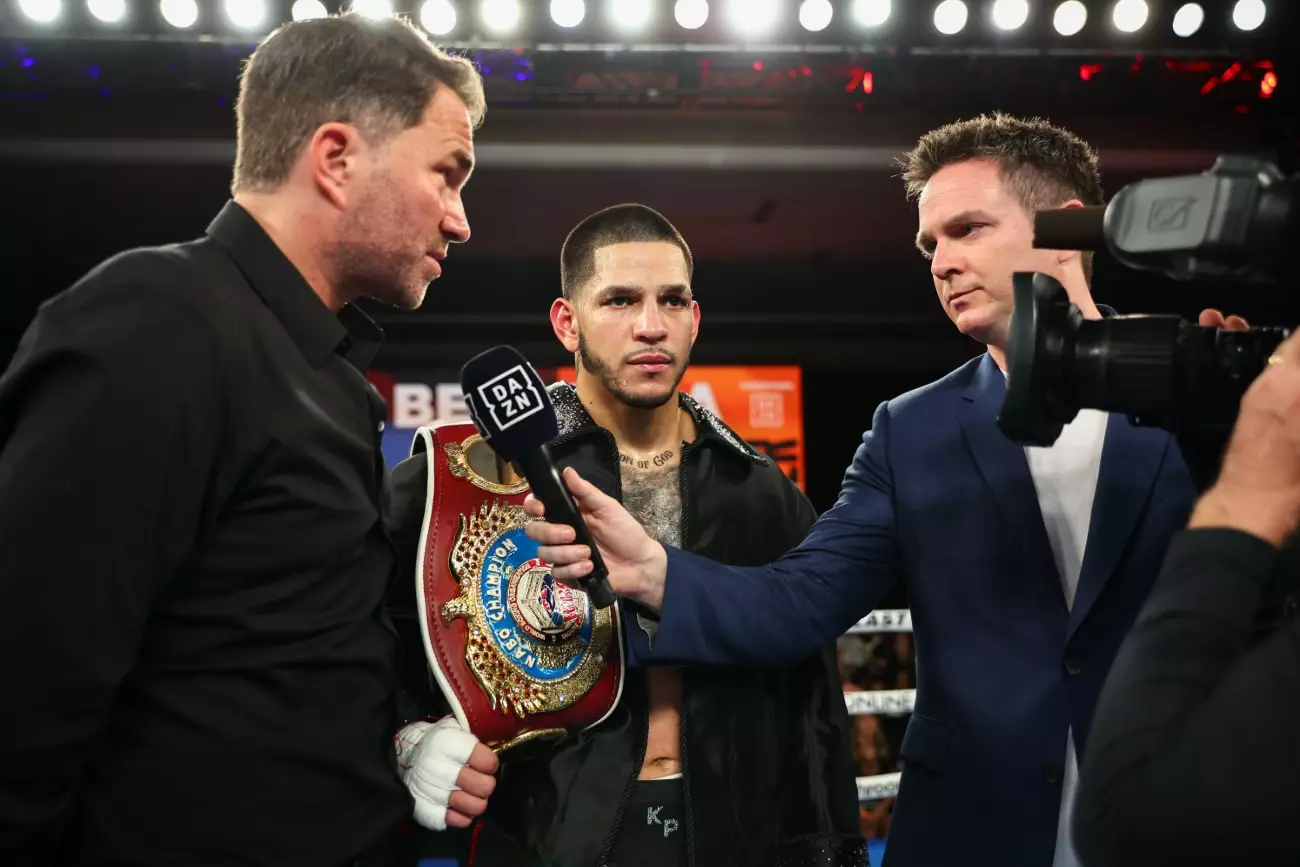In the ever-evolving landscape of professional boxing, Edgar Berlanga stands out as a fighter brimming with ambition and confidence. At this pivotal moment in his career, Berlanga, boasting a record of 23 wins with only one defeat and 18 knockouts, has set his sights on Jaime Munguia as his next opponent. This move, he asserts, could pave the way for a coveted rematch with none other than Canelo Alvarez, the reigning king of the ring. But amidst his aspirations, questions emerge: Are the contenders he aims to face genuinely capable of elevating his status in the boxing world?
Berlanga’s strategy includes targeting three notable names: Jaime Munguia, Jermall Charlo, and Caleb Plant. While he believes that overcoming these opponents will solidify his standing and earn him a rematch with Canelo, a closer examination reveals that the landscape is littered with complexities that may challenge his ambitions.
Size and Style: A Double-Edged Sword
One striking factor in Berlanga’s approach is his physical presence in the ring. Contrasting with the typical fighters in the super middleweight division, Berlanga has appeared to embrace a more robust, cruiserweight-like physique during his bouts. His last fight against Jonathan Gonzalez-Ortiz showcased not just his size but also a certain ferocity that could give him an edge. However, this reliance on sheer size introduces a critical dialogue about his boxing style. Size can intimidate, but it can also lead to complacency if not matched with technical skill.
Losers are often judged not just by their records but by their performances. For Berlanga to truly make a name for himself, he must adopt a more nuanced approach that integrates power with improved finesse and strategy. If he continues to operate merely as the bigger fighter, he risks falling short against highly technical opponents like Munguia and Plant, who boast their significant skills.
Controversial Paths to the Top
When assessing the potential opponents—Munguia, Charlo, and Plant—it becomes apparent that none of them are at the zenith of their careers. Munguia is still grappling with the aftermath of his last defeat and a lackluster record that raises doubts about his credibility. Jermall Charlo, once a formidable presence, has been conspicuously absent from the ring for an extended period, leaving many to question his readiness. Likewise, Caleb Plant, though possessing an impressive skill set, has not fought anyone of significance since his loss to David Benavidez.
These conditions present a landscape that Berlanga may unwittingly exploit. However, the path he is choosing not only seems strategic but also somewhat opportunistic. By targeting worn or hesitant names, he risks being labeled a fighter looking to pick off fading rivals rather than stepping into the ring with the best of the business. A successful campaign against these fighters will do little to erase the questions surrounding his capabilities against top-tier talent.
Negotiations: The Road Ahead
Berlanga’s willingness to negotiate directly with DAZN and his insistence on becoming a legendary figure underscore his ambition. His comments about wanting to sit down with key industry players indicate a desire to shape his own trajectory in the sport rather than merely following the traditional pathways set by promoters. This self-determined approach is laudable but, in boxing, will money and popularity ultimately dictate what makes for a compelling match?
However, Berlanga’s assessment that defeating those three challengers will naturally lead to a lucrative rematch with Canelo reflects a somewhat naive outlook. Canelo’s marketability and career accomplishments are far removed from Berlanga’s current trajectory. The reality is, fighters like Canelo have options, and if Berlanga continues to falter against formidable opponents, he may find himself overlooked or relegated to lower-tier bouts.
The Mental Game: Overcoming Doubts
Berlanga’s insistence that he was only fighting at “50%” during his last encounter with Canelo, citing injuries and preparations, reveals an underlying mental battle that could hinder his ascension. It is crucial to recognize that setbacks are part of every athlete’s journey. However, clinging to the narrative of impediments rather than seeking to overcome them can become a mental blockade. If Berlanga wishes to stand across the ring from Canelo again, he must first confront these mental hurdles and establish himself as a consistent, capable contender below the legendary status he aspires to.
Ultimately, the boxing world eagerly awaits Berlanga’s next moves. His fire and drive could generate compelling storylines, but the stark reality remains: ambition without substance will inevitably lead to another forgotten chapter in the rich tapestry of boxing history. Time will tell whether Berlanga has the mettle to navigate this daunting landscape and transform his aspirations into tangible success.

